Saskatchewan artist Victor Cicansky has long been celebrated for his inventive, thought-provoking, and humorous sculptures. Learn more about Cicansky’s career and striking examples of his work in Glenbow’s art collection in this artist profile.
For over forty years, Victor Cicansky (1935–2025) has been known for playful yet serious artworks that represent fruits and vegetables. He created sculptures of everyday produce in vivid detail, capturing the delicate textures of the heads of asparagus, for instance, and the tight pattern of kernels on a cob of corn. At the same time, his compositions have surprising twists: he has depicted a glossy red tomato lounging on an armchair, and an apple branch morphing into a crutch. Though the artist’s sense of humour is evident in all these works, his art also invites deeper reflections on nature, food, and society.
Cicansky grew up in a community where gardening was fundamental. His family lived on the eastern outskirts of Regina, an area where many residents had Eastern European heritage (his own family came from Romania). Many of his neighbours grew their own food, using both front and back yards. As he later recalled, “People had large gardens, […] and the gardening was always communal because there was one large tract separated into lots that people shared. […] People would stand and talk and someone would bring a gallon of wine. They would work and stop to have a smoke and talk some more. And there were stories, mostly of the old country.”[1] Gardens would become a lifelong source of inspiration. As he noted in 2019, “Making a garden is like making art […] You have to tend to it; you have to solve problems. You have an idea that you want to develop, whether it’s an idea of a garden, or whether it’s an idea for a work of art. I don’t see any difference. It’s a creative effort.”[2]
After he left school, Cicansky worked in construction and then as a teacher. His career as an artist began gradually. In the summer of 1960, Cicansky’s brother-in-law, artist Joe Varro, showed him how to make a clay pot.[3] After that experience, Cicansky began taking classes in ceramics, but he soon lost interest in making vessels and dishes. He was fascinated by the possibility of making ceramic sculptures — at a time when very few sculptors chose to work in clay. He decided to pursue graduate studies at the University of California, Davis, where he completed an MFA in 1970. It was there he began to find his own direction in art: he felt that in his program, “Total freedom of materials, ideas, and attitudes were accepted and encouraged,” and students could “just work out whatever ideas you had.”[4] He quickly began making sculptures inspired by everyday objects, such as armchairs and hats, and by the early 1970s he had become part of a group of sculptors in Regina who were known for inventive work in clay. Then, in 1977, inspired by the vegetables he and his family grew and canned for their pantry, he started a series of sculptures of preserves.[5]
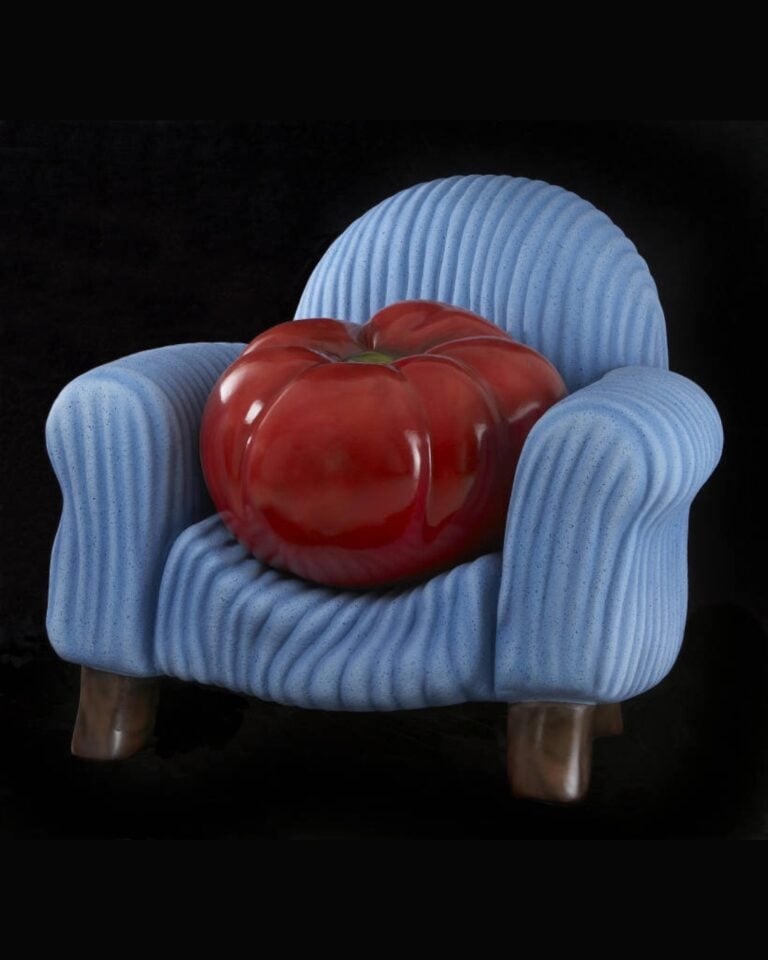
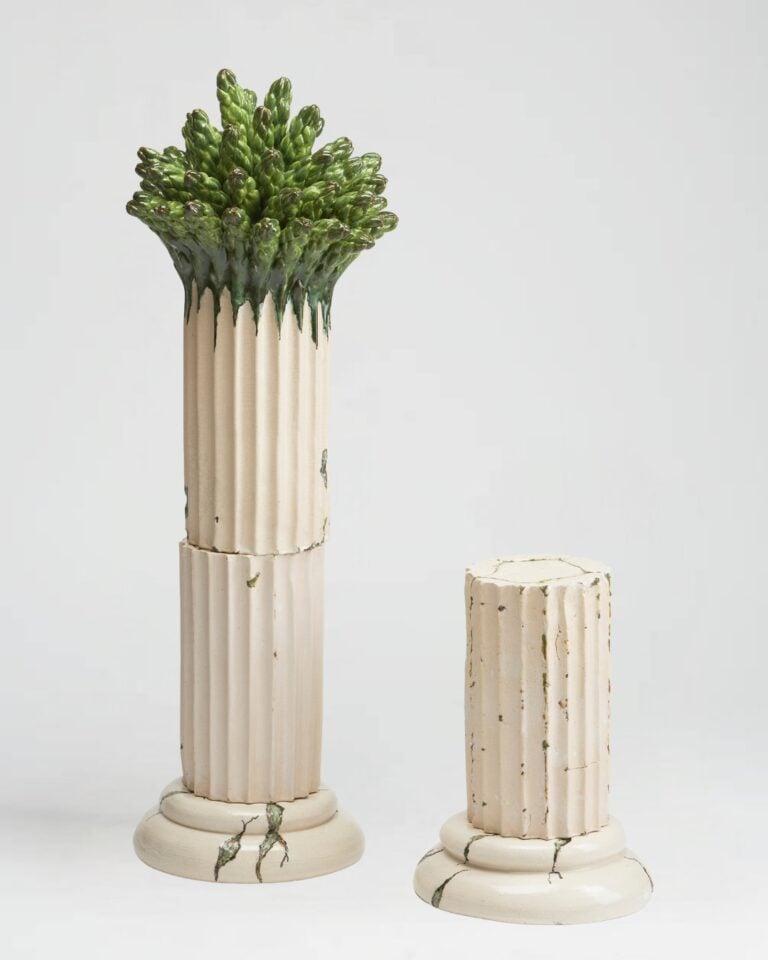
By the early 1980s, Cicansky was regularly experimenting with vegetable forms, a theme that would recur in his work for decades. While many of his works are surprising, they are often grounded in his memories. The origin of his series of sculptures of vegetables in armchairs, such as Armchair Tomato, is his memory of his grandmother placing vegetables she had picked from her garden on a chair.[6] Other works are grounded in his wider reflections on nature: the form of Asparagus Column, in which plants seem to burst from a stone ruin, was inspired by his experience of seeing ruins in Greece gradually being taken over by plants, and his interest in the power and strength of nature.
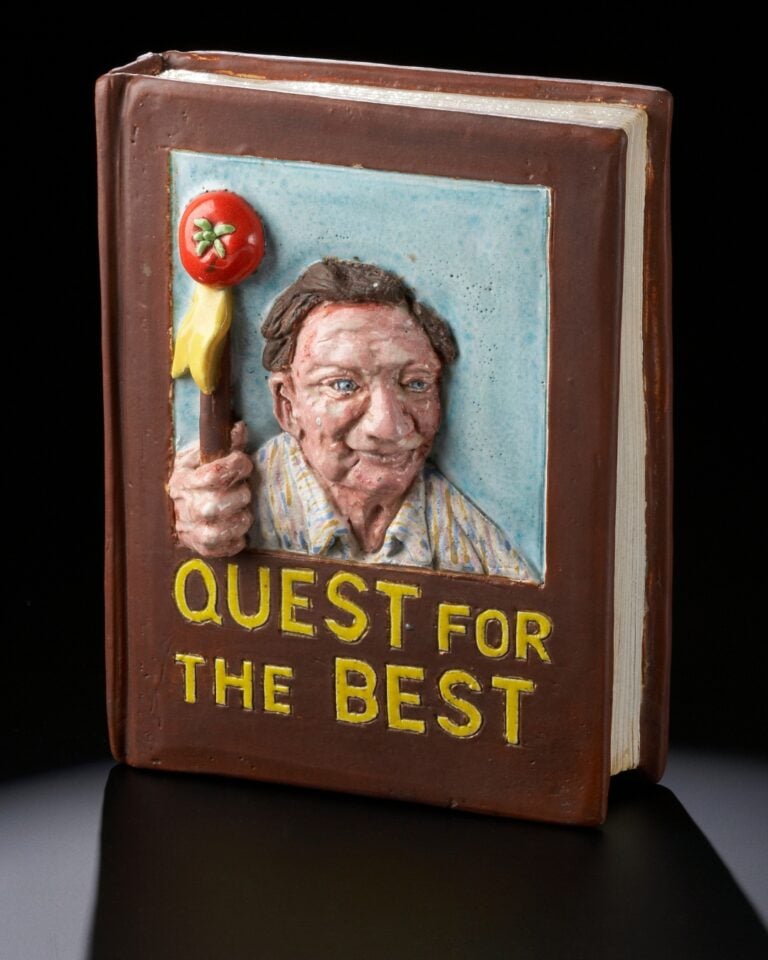
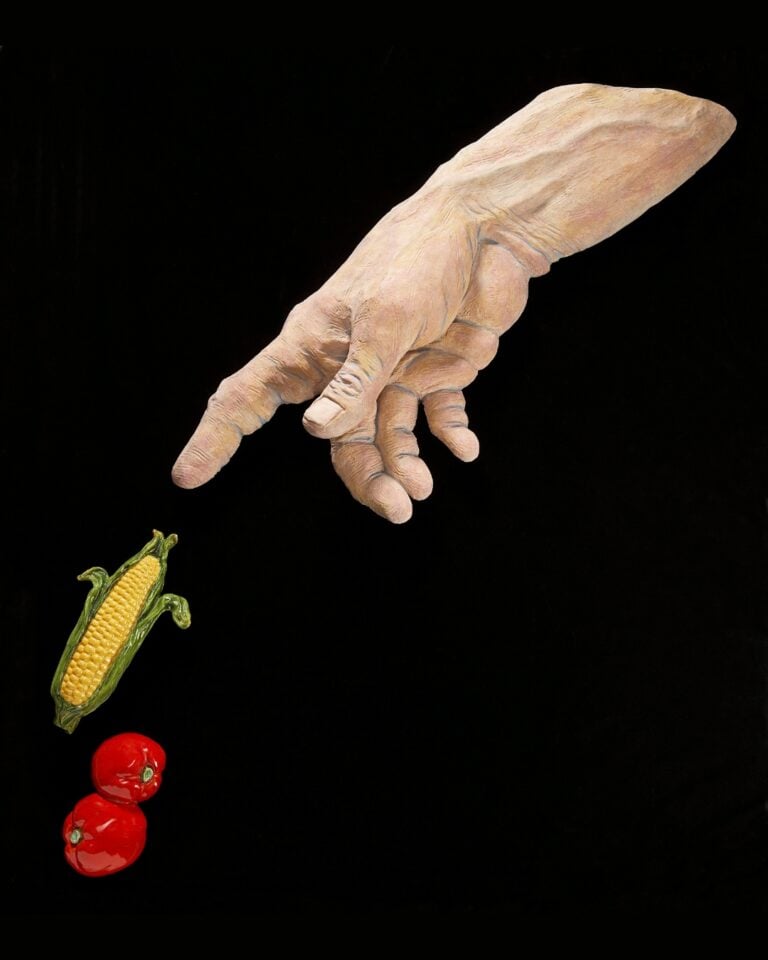
Cicansky also created numerous sculptures that pay tribute to gardeners, including several sculptures that represent gardening books. Titles in the series include The Green Thumb (1982), Prairie Gardener (1982), and Quest for the Best (1984), which has the alternate title Tomato on its spine. The covers of these ceramic volumes integrate portraits, sometimes of the artist himself, and sometimes of others. In Quest for the Best, the cover of the book features an older man — perhaps someone Cicansky remembered from his childhood — proudly holding his prizewinning tomato. The work is as much about his hard work and achievement as it is about the vegetable. As Nancy Tousley noted in a review of Cicansky’s solo exhibition at Glenbow in 1983 (a travelling exhibition that offered a major survey of his career), book sculptures like this one speak “indirectly about human lives and values.”[7]
In the Creation series, Cicansky offers a playful art history take on gardening. With works such as The Creation of Corn and Tomatoes, he represents a powerful hand giving life to vegetables — an image that echoes Michelangelo’s depiction of God giving life to Adam in the Sistine Chapel. When the Creation sculptures were exhibited in 1993, art critic Gregg Beattie saw this work as connecting back to gardening and community. He commented, “Whether crediting God for the fertility of the prairie garden or humanity for the ingenuity to cultivate the soil, the ceramic pieces are consistent with Cicansky’s vision of the garden as a family-centred territory that provides sustenance for the family unit.”[8] For Cicansky, there was something spiritual in gardening, and this energy is present throughout his practice.
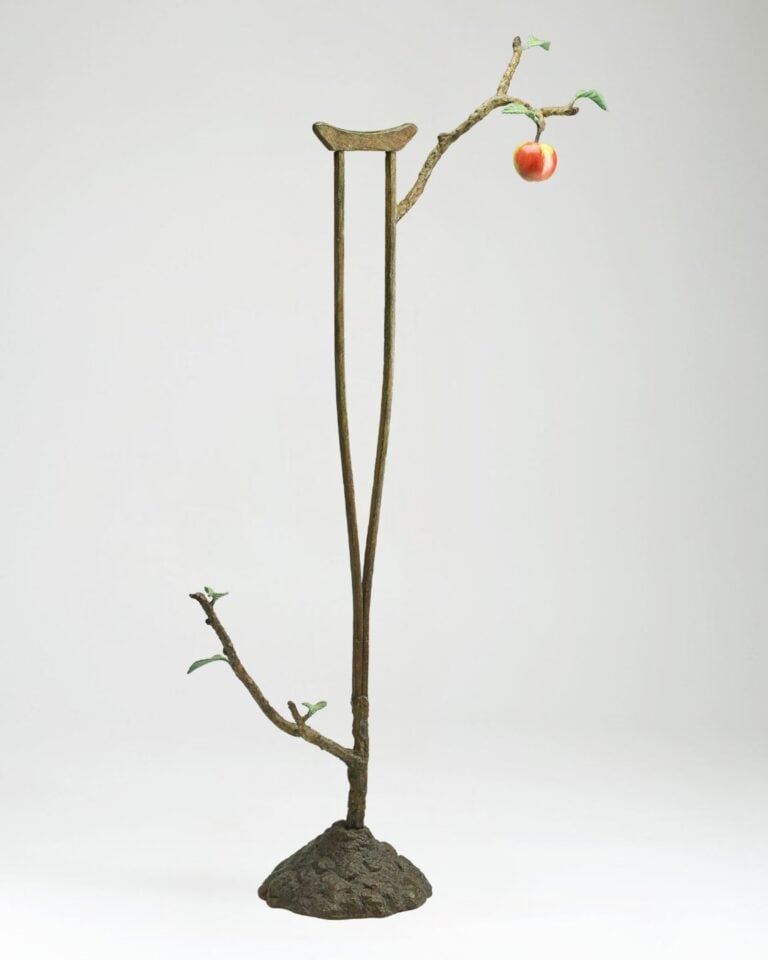
In 1985, Cicansky began creating bronze sculptures, working with a foundry near Regina that was established by Joe Fafard, another leading Saskatchewan artist. For Cicansky, the strength of bronze was appealing, as it allowed him to create sculptures with delicate, open forms that were not possible in clay.[9] Many of his early bronze works represented apples and pears, with delicate, curving branches and sprightly leaves. In some sculptures, the fruit trees merge with furniture forms, while in later works they become tables themselves (often with glass tops). In Curious Hybrid, Cicansky returned to his interest in nature overtaking the human-made. For this work, he was inspired by crutches he was using after a broken toe; reflecting on how a tree was turned into a crutch, he decided to show it transforming back into a tree. In doing so, he brought his viewers closer to gardens and the earth, using an uncanny surprise to bring people closer to the natural world.
Cicansky was committed to this approach throughout his career. He felt strongly that gardening was an important cultural and political practice, entwined with contemporary issues. As he told the Regina Leader-Post in 2019, “People don’t want to talk about climate change. And I contend that as an individual you have to do something. And for me it’s gardening…And if millions of people started to garden, dig up their lawns…things begin to change.”[10] Yet while Cicansky wanted people to be inspired, he also wanted them to laugh: as Gina Fafard noted when Cicansky died, his art was “Very joyful. You could tell the energy and love that he put into his work was who he was.”[11] It is this balance of laughter and politics realized through inventive compositions and outstanding craftsmanship that made Cicansky one of Saskatchewan’s most revered artists.
References
[1] Nancy Tousley, “Sexy Veggies,” Calgary Herald, May 14, 1995, E3.
[2] Victor Cicansky, quoted in Ashley Martin, “Across the Gardener’s Universe,” The Leader Post, June 29, 2019, C3.
[3] Martin, “Across the Gardener’s Universe,” C3.
[4] Don Kerr, The Garden of Art: Vic Cicansky, Sculptor (Calgary: University of Calgary Press, 2004), 31.
[5] Kerr, The Garden of Art, 39.
[6] Tousley, “Sexy Veggies,” E1.
[7] Nancy Tousley, “Sculpture display is eye-filling delight,” Calgary Herald, April 14, 1983, D8.
[8] Gregg Beattie, “Cicansky goes back to the (familiar) garden,” The Leader Post, June 21, 1993, C8.
[9] Tousley, “Sexy Veggies,” E3.
[10] Cicansky, quoted in Martin, “Across the Gardener’s Universe,” C3.
[11] “Renowned Saskatchewan sculptor Victor Cicansky dies at 90,” CBC News, March 4, 2025, https://www.cbc.ca/news/canada/saskatchewan/victor-cicansky-sculptor-artist-1.7474361.
